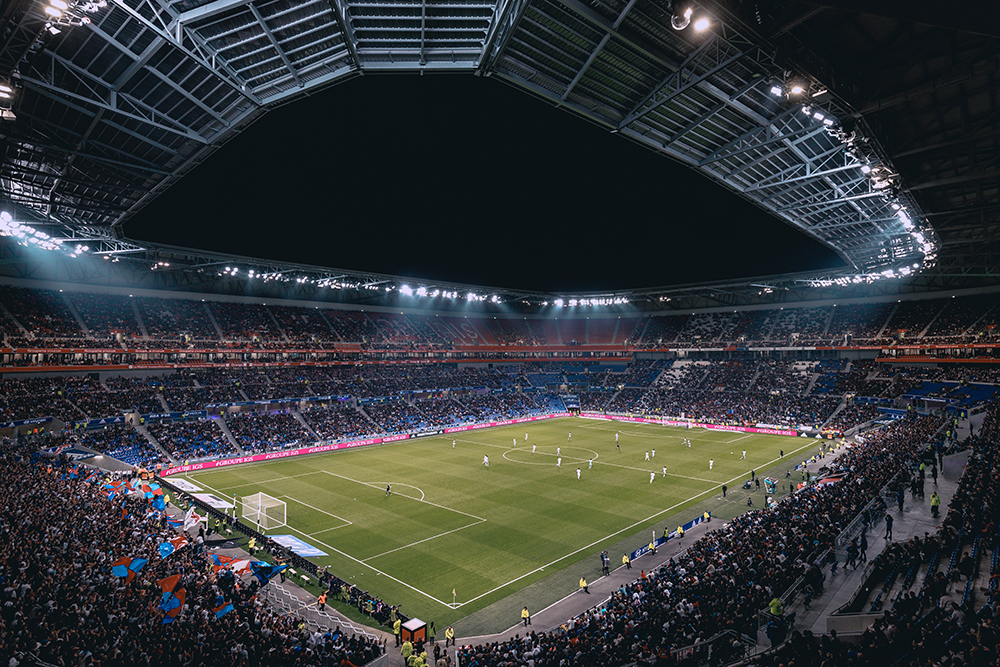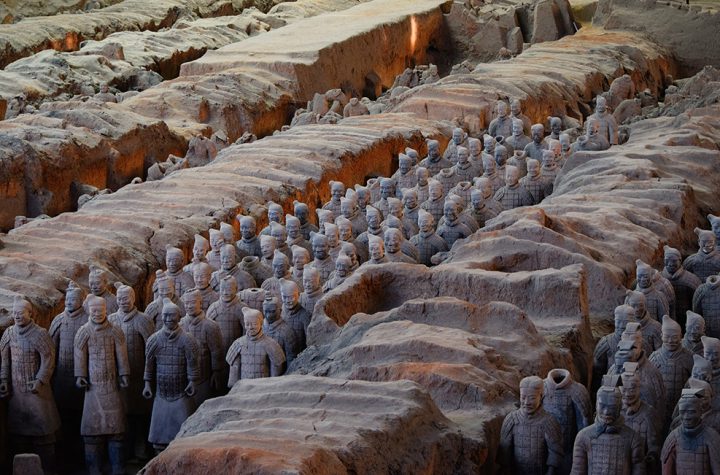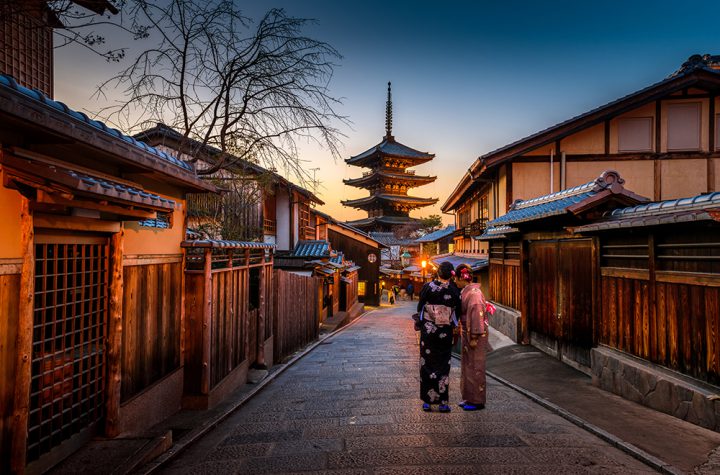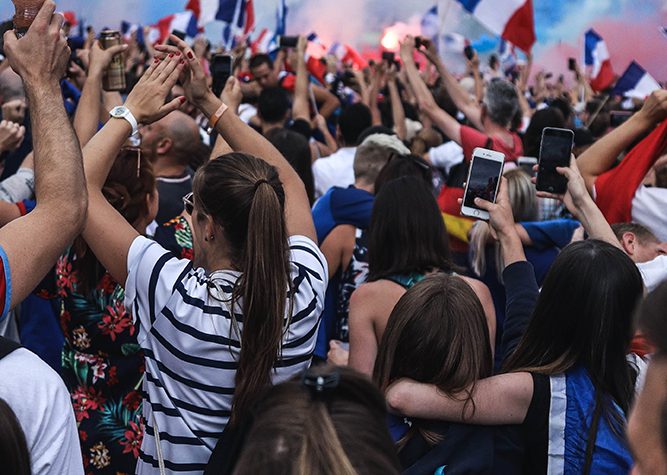
Ching Juan Neina, a bright-eyed 15-year-old, tapes her wrists and dips her hands into a bowl of chalk. She stands over a barbell stacked with a pair of green 10 kg plates, reaches down, and grips the bar, readying her body for a snatch, one of the two moves central to competitive weightlifting. After a brief pause, she gets into position chest up, feet directly below hips, back flat, knees bent, core tight and arms straight and slowly pulls the barbell past her knees. In a single, explosive movement, she drives it past her chest and head, and drops, as weightlifting parlance has it, ass-to-grass. She holds the position for a split second and then releases the barbell. It bounces on the platform, almost sliding off the scuffed wood.
Anita Chanu, wearing a bright yellow jacket with the word Coach emblazoned across its back, rolls back the barbell. She walks briskly around the Regular Coaching Centre at the Khuman Lampak Stadium in Imphal, Manipurs capital, past rusty racks, stacks of bright plates, fraying rubber mats, past grimy, cobweb-tinselled windows, stopping intermittently to correct, reprimand or praise. Your knees are in the wrong position. Faster, faster Try again. That was very good, she says to a girl who has cleared around 65 kg, raising her voice to be heard over the constant thud of barbells, the scrape of wooden-soled weightlifting shoes on bare concrete, and the chatter of the dozen-odd girls and young women who have gathered to train this December morning.
A pioneer of womens weightlifting in India, Chanu hopes to train more women who will follow in her footsteps. This is a small, simple training centre, says Chanu. But with nothing but honesty and sincerity, we have produced so many international athletes. Drifting through the air, as palpable as the faint whiff of perspiration and the tired sighs, is a shared ambition for one thing, and one thing alone. To become an Olympian, as Neina confesses.
A sporting legacy
The Olympic dream echoes through the lush oval valley surrounded by hills. Sporting activities are inextricably woven into the States cultural fabric, and it has been that way for centuries. Polo, for instance, originated here as did other sports, including mukna, a form of wrestling; indigenous martial arts such as thang-ta and sarit sarat; khong kangjei, a version of hockey that also included bouts of wrestling; and yubi lapki, a rugby-like game played with a coconut. By the medieval era, the kingdom was divided into six districts called pannas for administrative and military purposes. The pannas competed against each other in sports contests and the winners were rewarded by the king. Like all nations in the past, Manipurs people had to keep themselves fit to meet any eventualities, including war, explains R.K. Nimai Singh, former commissioner of Youth Affairs and Sports in Manipur. So, they engaged in many sports, he adds.
The obsession with sports stayed with Manipur through its tumultuous history. In 1891, when the British conquered Manipur and turned it into a princely State, the panna system died. A sports club culture developed, and an abundance of tiny clubs sprang up. These neighbourhood clubs, created and supported by the local people, remain the primary system for athletic development in Manipur. You wont find it anywhere else except West Bengal, says Singh.
After Independence, Manipur became a reluctant addition to the new India. It had framed its own constitution and even held its first Assembly election by the time the Maharajah of Manipur was forced into signing a merger agreement with India in 1949. Manipuris have since held their integration into India as illegal and unconstitutional, writes Thongkholal Haokip, assistant professor at Jawaharlal Nehru University, in Indias Look East Policy and the Northeast.
Through upheavals and all
Independence movements in the State began to gather force in the early 60s. In 1964, the Meitei-led United National Liberation Front became the first separatist faction in the State. Over the last 50 years, more than 30 such groups (some now inactive) mushroomed across Manipur. In response, the Centre came down hard on the secessionists, and in 1980 imposed the Armed Forces Special Powers Act (AFSPA) in Manipur. The exercise of these powers, rationalised as necessary to control violence, has often led to human rights violations such as rape, extrajudicial killings, and harassment.
The insurgents retaliate with strikes, blockades, disorder and violence. The ongoing battle may have affected law and order, but there is one thing nobody in Manipur neither politicians nor rebels interferes with: sports.
Like millions across the country, Nameirakpam Kunjarani Devi, then 14, and her family, gathered round the TV to watch the 1982 Asian Games over 16 drama-filled days, the first big event broadcast in colour in India. In the little town of Kairang, some 2,000 km from Delhi, where the games were held, Devi watched P.T. Usha, the queen of Indian track and field, sprinting her way to two silver medals. It triggered her own desire to mount a winners podium at international competitions. She tried her hand at every sport she could think of: hockey, football, kho-kho. But at 4 feet, 11 inches, she knew she had little chance in these games.
Strength sports, however, were a different deal.
Anita Chanu and Kunjarani Devi met at the home of their powerlifting coach, Kunja Kishore Singh, in 1983. They trained on the porch of Singhs house through balmy summers, sodden monsoons, and foggy winters, mindful of nothing but the heft of metal and the weight of their dreams. They lifted makeshift barbells discarded autorickshaw rods to which they attached weights and used cut bamboo as squat racks. In those early years, the government allocated no funds to sports development. We even put in our own money to participate in competitions, says Devi. Or they turned to friends and families. When I wanted to go for a championship, all of Manipur would chip in. If anyone had a spare rupee, they were ready to donate it to sports, she says.
Shorter is better
That year, Devi created a national record in powerlifting, with a 75 kg back squat, 42.5 kg bench press, and 95 kg deadlift. Two years later, Chanu represented India at the World Powerlifting Championship in Vienna. The international exposure whet her appetite. I thought I should participate in the Olympics, she says. Except, powerlifting wasnt an Olympic sport. Then, in 1985, for the first time, India conducted its National Games modelled along the lines of the Summer Olympics. And for the first time, womens weightlifting was added. Chanu and Devi switched to weightlifting, which tests strength limits using the snatch and clean-and-jerk instead of powerliftings bench press, back squat and deadlift. They were soon excelling at it.
Research shows that shorter heights give athletes an advantage in weightlifting because they have a lower centre of gravity, which means greater stability and better leverage. The average Manipuri, says Chanu, has the right build for weightlifting short but with good muscle mass especially for the lower weight categories. Our youth have good discipline, dedication and yes, killer instinct, she says.
Gold is gold
A photograph from the 1985 National Games shows Devi, dressed in a singlet and sporting the same pixie haircut she has today, lunging into the final position of a clean-and-jerk. Her white-gloved hands grip the 85 kg barbell, her biceps are straining. At that time, she weighed only 44 kg, the lowest of the 10 weight categories allowed for women. She went on to win gold in three categories 44 kg, 46 kg and 48 kg.
Gold is gold, says the soft-spoken, bespectacled Devi. It changed everything for me. Devi went on to set two new national records at the National Games in Thiruvananthapuram two years later. She trained locally with her old coach until 1989; in her free time poring over the sports magazines that trickled into Manipur.
China had already emerged as a weightlifting powerhouse by then it holds the most world records to this day and Devi tracked it through 1985, 86 and 87. Even without focused training, she realised she could lift almost as much as the Chinese champions. I knew this was my sport, says Devi.
The Sports Authority of India had by then begun organising national coaching camps. Chanu and Devi began travelling to attend these camps, rarely going home to Manipur for breaks. The trip home would have taken five days each way, if they were lucky not to get stranded at the border by the ongoing insurgency. But that wasnt the only reason they stayed behind. They feared deconditioning because of the lack of proper infrastructure back home. So, Devi and Chanu would stay back in the camps, tossing around barbells, deepening squats, stretching their limbs to better flexibility.
Giving back
Chanu took part in 11 international contests overall, winning a few medals at various Asian championships, but by 1990 she was battling multiple injuries. I was very disappointed, she says. So her focus shifted to coaching. She had been exposed to the best coaches, physiotherapists, masseuses at the camps. I learned a lot from them, she says, and decided to share it with the next generation. In 1999, Manipur hosted the National Games and built Khuman Lampak stadium in the heart of Imphal. Chanu opened her Regular Coaching Centre at the stadium the next year.
Devi went on to become the most decorated Indian sportswoman in weightlifting. She started competing internationally by 1989, gathering medals almost everywhere she went, including three silvers at the Womens World Weightlifting Championship in Manchester that year, bronzes at the Asian Games in 1990 and 1994, a gold at the 2006 Commonwealth Games 68 international medals in all. In 2004, she made it to the Athens Olympics, finishing fifth with a combined lift of 190 kg. She was honoured with the Arjuna Award for Sports, the Rajiv Gandhi Khel Ratna and, in 2011, a Padma Shri.
Devis rockstar status both derives from and fuels the empowerment of the women of Manipur, unusual in a country known for its extreme gender inequality. From early times, womens strength was encouraged and lauded in Manipur. In ancient Manipuri history there was no sexism, says lawyer and human rights activist Leitanthem Umakanta Meitei in a paper titled, Voyages of Women in Manipur.
The ancient Lallup-Kaba, a sort of forced labour system that required every adult male to spend a considerable amount of time away from home, serving the king, created economic independence for women. When the men were away, the women tended to the fields and engaged in trade, male domains in most other cultures.
Today, women run almost all the markets in Manipur, including the Ema Bazaar or Nupi Keithel, a 500-year-old, all-womens market in the heart of Imphal, by some accounts the largest such in Asia. Theyve fought wars against both the British and against substance abuse in the State and spent nights patrolling the streets to prevent human rights violations in Manipur. This strength naturally extends to sports.
A new champion
Tokyo 2020 is around the corner, and Indias hope for it Saikhom Mirabai Chanu is training hard. The bobble on her hat bounces as she jogs with a group of young women across the lawns of the National Institute of Sports in Patiala; the shortest in the bunch, she leads the pack in a messy line. They stop and launch into stretches, conditioning exercises and plyometrics under the eagle eye of national weightlifting coach Vijay Sharma. Twenty minutes later, warm-up completed, they shed jackets, change shoes and turn to the barbells that line the weightlifting hall.
Chal beta, (go child) says Sharma. Mirabai bends forward, touches her forehead to the barbell almost as if in prayer and stands up, her personal ritual before every lift. She bends again, this time drawing the barbell to her shoulder, then squats, stands up and drops it. Shabash! says Sharma.
She lifts like a natural, but Mirabais entrance into this world was almost accidental. She had wanted to enrol in archery but the enclosure was closed, so she peeked into the weightlifting hall at Khuman Lampak Stadium and was smitten. I wanted to do it, she says, nursing a cup of coffee as old Bollywood songs stream out of the tea shop where we meet after her training.
She turned out to be very good at her game. She attributes this to years spent trekking up and down hills carrying firewood on her head. Anita Chanu, Mirabais first coach, says she saw great potential in her right from the start: I told her parents that if they supported her, she would win many medals.
Mirabai trained at Chanus centre for the next four years, daily traversing 20-odd km between her home in the village of Nongpok Kakching to Imphal. Sometimes, she took a shared tuk-tuk, often she cycled or hitched a ride on a truck, crossing straw-strewn fields and fish farms before reaching the city.
It was hard, at first, she remembers. Her father, Saikhom Kriti Singh, earned a paltry salary in the Public Works Department and had six children to raise. I told my mother it would be difficult for her to spend so much extra on my diet, she says. But her mother asked her not to worry. Bananas every day, milk and eggs twice or thrice a week, and vegetables that grew around the house fuelled her. Not really a proper full diet, she remembers, but enough to keep her going.
She won her first significant medal just one year after training a gold at the Youth Championships in Chhattisgarh in 2009. Within five years, she was lifting a combined weight of 170 kg, enough to win her a silver at the Glasgow Commonwealth Games in 2014. She started working with her current coach Vijay Sharma that year, and by 2016 was lifting a total of 192 kg, breaking Kunjarani Devis 12-year-old record of 190 kg.
News of her success has drifted into the village of Nongpok Kakching, her hometown in Manipur, more than 2,000 km away. Im really happy about what she has achieved, says her mother Saikhom Tombi Devi, hauling a couple of wooden chairs into the courtyard of their home. She unearths a prized photograph of her daughter receiving the Khel Ratna in 2018, dusts it with her pink dupatta, and says, Our village has become famous because of my daughter.
Olympic dreams
In August 2016, Mirabai travelled with six Manipuri athletes to Rio de Janeiro to compete in the Summer Olympics. Her 192 kg (423 lbs) lift was enough to garner a medal, any medal, she thought. On stage, she blinked at the blinding lights, the weight plates, the row of competitors beside her. She felt a sudden wave of panic. Then she went blank. To this day, she doesnt remember what happened next. But India did.
The newspapers the next morning went to town: Indias Meltdown at Rio, said The Hindu; Weightlifter Mirabai Chanu disappoints, blows away medal chance, said The Indian Express; Weightlifter Mirabai Chanu failed to complete her event, said The Times of India. The words seared deeply into her psyche as the three letters DNF (Did Not Finish) appeared beside her name on the Olympics scoreboard. Worse, the silver medallist that year, Sri Wahyuni Agustiani of Indonesia, lifted 192 kg, exactly what Mirabai Chanu had lifted at the trials.
She remembers being distraught, questioning her skill and strength, even toying with the idea of quitting. Family support, more training, and weekly sessions with a psychologist came to the rescue. She learned to manage her nervousness. I read history books or watch videos now, she says. It helps distil her thoughts, boiling them down to just one idea: the barbell.
Golden aims
It seems to be working. Over the last five years, Mirabai has won multiple accolades. In 2017, she won a gold medal at the World Weightlifting Championship, the first Indian woman to do so after Karnam Malleswari in 1994, proving herself to a world that had written her off.
She chased it with other golds at the 2018 Commonwealth Games at Gold Coast and the 2019 EGAT cup in Thailand. She bettered her own record at this years World Weightlifting Championship, finishing fourth with a combined lift of 201 kg, and ended 2019 with a bang: a gold at the Qatar International Cup.
Everything is going to plan, says coach Sharma, who believes the 25-year-old has a good shot at an Olympic medal. Currently, she holds the eighth spot in the Olympic qualifiers ranking list. Sharma is positive but cautious. We are working hard, lets see what happens, he says.
Mirabai wears her dream in an unusual place, her ears. Her small gold earrings, shaped into five interconnected rings, are a gift from her mother, reminding her of her Olympic dream.
It drives her to do what she does: daily training, boiled food, a regimented sleep schedule that leaves little time for fun or entertainment, a constant battle against exhaustion and injury. If I want something, I have to get it. Besides, everyone has placed so much hope in me. I cant let them down, she says.
Harder to deal with, however, are the bouts of homesickness: the longing for textured, green plains; the warmth of a mothers hug; the delicate flavour of eromba, a mildly-spiced stew of fish and vegetables. Since I have started competing, I barely go home. I miss it so much, she says wistfully. There is no room for nostalgia, however, only razor-sharp focus and hard work. And Mirabai knows this. I have to get that medal at the Olympics. And once I do, I will go home.
The author is a Chennai-based writer and storyteller.





More Stories
“Nobody is the reason for my death. My family is having to bear a lot of expenses because of me. I am a burden to them, my education is a burden to them….” A day after she wrote this note, Aishwarya Reddy, a student at Lady Shri Ram College for Women in Delhi…
Tom Brady’s arrival had the Buccaneers dreaming of an NFC South title, but the Saints showed the QB and his team they’re a far from being a contender.
Barnaby Joyce claims he told Malcolm Turnbull ‘others’ were having affairs